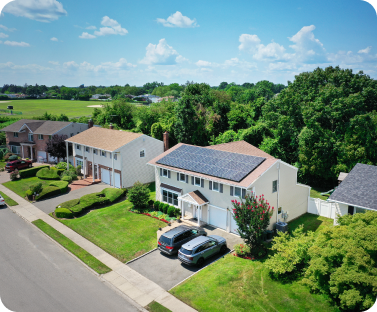Backup Power Systems: An Introduction
Nov 09, 2012
by EmPower Solar
A standard “grid-tied” solar electric system that EmPower installs is designed to connect to the grid and reduce or eliminate electric bills, and stay connected at nighttime and rainy days. It is engineered, by regulation, to disconnect from the grid when there is a power outage in order to protect the line workers.
In order to select the best backup system for your home or business, we recommend a two-step process. First, determine what you want to power in the event of a power outage. Second, evaluate the pros and cons of the two main backup solutions that can provide the power you are looking for, including building code, safety and reliability considerations.
Step 1: Determine Critical Loads
The first step is to create a list of critical loads that you want powered when the grid is down. For homeowners, the list tends to include key lighting for the kitchen, garage, outdoor security, the refrigerator, heating system valves and pumps, sump pumps, computers and a few receptacles to charge electronics. For businesses, the list is similar, but there may be other critical process loads, including servers or sensitive equipment. Sometimes it’s desirable to provide power for a whole house or building.
Once the total load, in terms of instantaneous power (watts) and total energy (watt hours), is known, different solutions can be evaluated.
Step 2: Options
EmPower provides three sets of solutions to enable backup power in the event of a power outage.
Option 1: Solar-Battery Backup
Several additional components must be added to make a standard solar energy system capable of providing power when the grid is down. First, a battery bank must be included to provide energy when there is no sunlight, and to accept solar charging when available. The battery bank is sized based on the amount of energy required, which is derived from the load analysis. Second, an auto-transfer switch is needed to transfer the solar array from grid-tied to off-grid battery charging mode. Third, the targeted critical loads must be wired to a new critical load panel.
Pros of the solar-battery system are that it is quiet, clean, doesn’t require fuel, can be installed anywhere “” indoors or outdoors “” and can be recharged with the solar. Cons are that while it is cost effective to provide power for a small number of critical loads, it is not as practical to power entire homes or buildings.
These systems typically range from $7,000 to $15,000.
Option 2: Generators
Generators are widely available in various sizes and fuel types. There are gasoline, diesel, natural gas, propane and biofuel generators. Generators can be permanently installed or portable. The pros of generators are that they are capable of providing an entire house with power at a reasonable up-front cost. For example, a 20 kW generator, capable of powering a standard size home, can cost between $8,000 and $15,000. There are several cons, however. The fuel might not be available, including natural gas, and the fuel can get expensive.
Code Compliance, Safety and Disaster Response
Additional important considerations include understanding the building code requirements, especially zoning, for generators, and making sure that safety is a number one priority. Generators must be properly ventilated to prevent any exhaust, including carbon monoxide, from entering a living space. In the event of a widespread disaster, such as what coastal regions are still experiencing following Hurricane Sandy, other considerations come into play, such as fuel availability.
EmPower’s Experience with Backup Power
EmPower has been providing backup power systems since 2004. Our installations include solar-hydrogen fuel cell systems, off-grid battery systems, grid-tied solar battery backup systems, and generators.
Say goodbye to high-energy bills and hello to worry-free solar

Say goodbye to high-energy bills and hello to worry-free solar
About the Author
EmPower Solar develops, engineers, installs, and services solar and battery systems for residential and commercial clients. Since 2003, EmPower Solar has empowered thousands of New York homeowners and businesses with 47 megawatts of distributed solar. Its vision is to create a new energy paradigm powered by clean, renewable energy for a more prosperous, healthy, and civil world. The company culture is defined by the EmPowering Way, which results in consistent 5-star customer service reviews. For more information visit empower-solar.com.